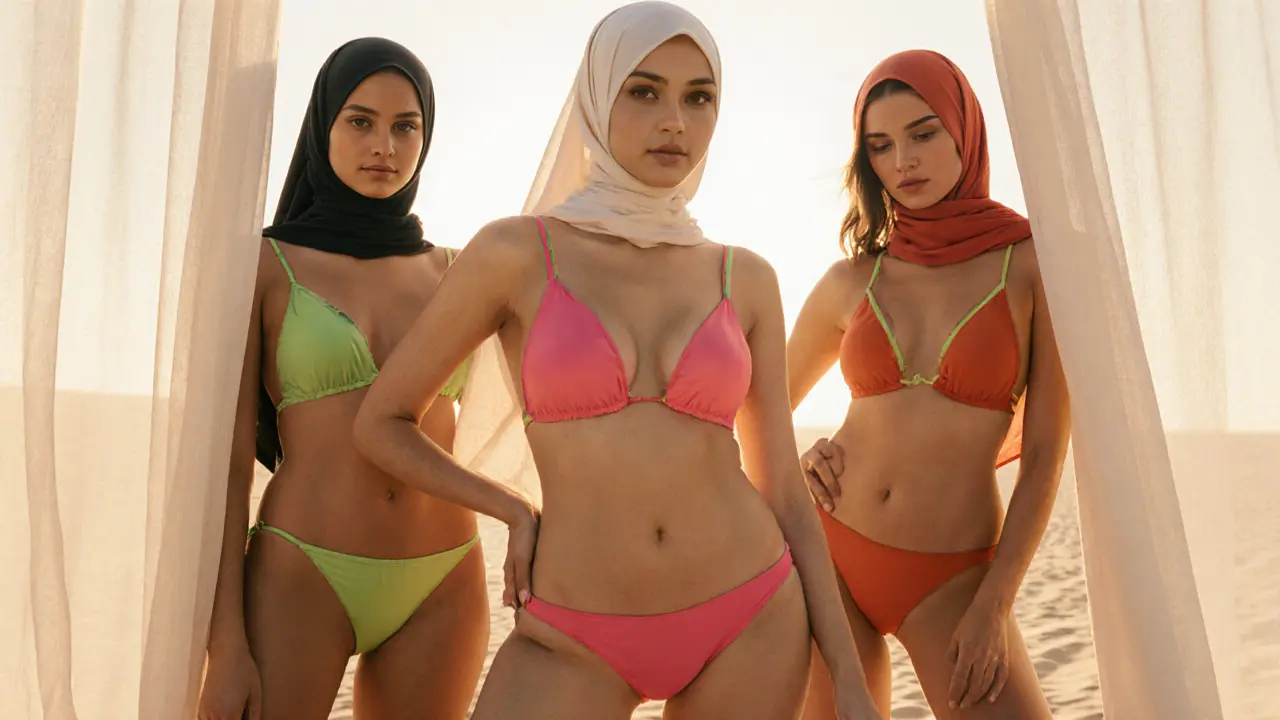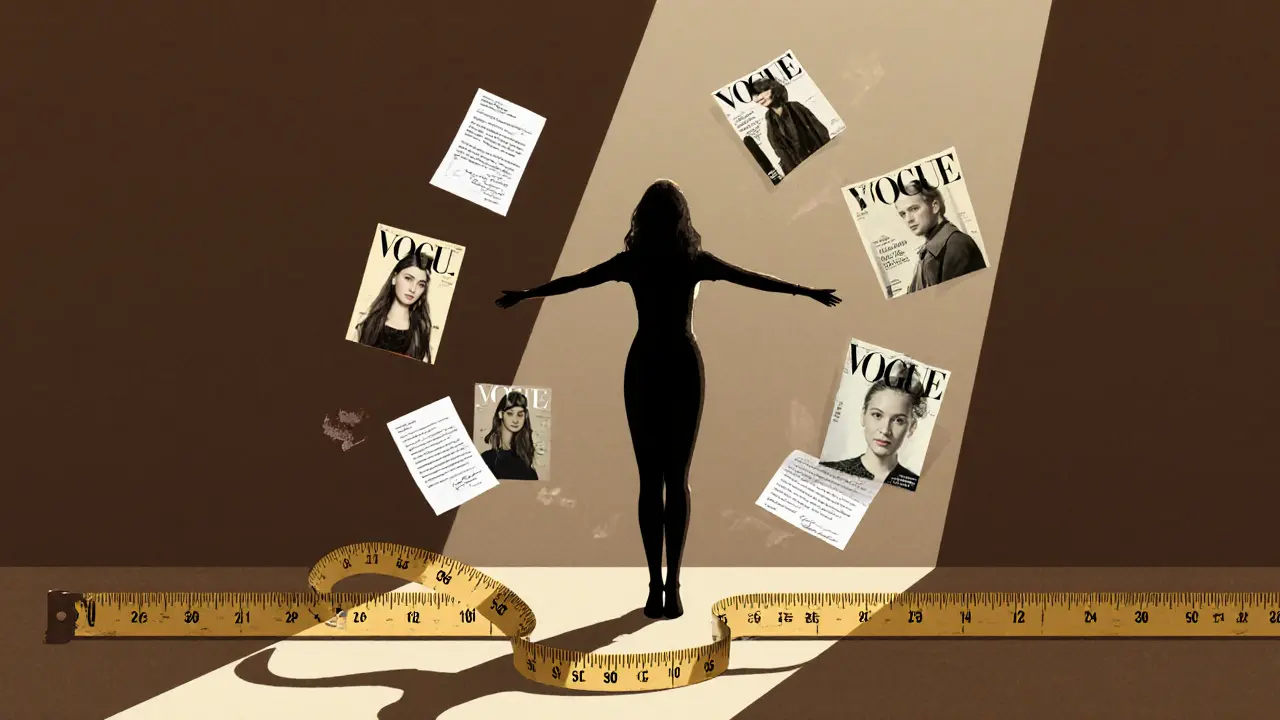You’ve seen them on billboards, in magazines, on runways-slim, tall, impossible-looking. And you’ve probably wondered: what is the average waist size for a model? It’s not just curiosity. For many, it’s a question about beauty standards, body image, or even personal goals. Let’s cut through the hype and give you real numbers, not filtered Instagram dreams.
Quick Answer: The Average Waist Size for a Model
The average waist size for a female fashion or bikini model is between 22 and 26 inches (56-66 cm). Most agencies require models to be under 25 inches for runway work, and bikini models often fall in the 23-25 inch range. These numbers aren’t random-they’re industry standards shaped by decades of fashion design, fabric draping, and client expectations.Key Takeaways
- Most fashion models have a waist between 22-26 inches
- Bikini models tend to be slightly larger than runway models, but still under 26 inches
- These measurements are not health indicators-they’re industry requirements
- Size standards vary by country, agency, and brand
- Many models achieve these numbers through strict dieting, not genetics
Why Waist Size Matters in Modeling
It’s not about being "thin"-it’s about fit. Designers create clothes on mannequins that are 24 inches around the waist. If a model’s waist is too big, the fabric won’t drape right. Too small, and the garment looks stretched or unnatural on camera. It’s a technical issue, not a moral one. In the 1990s, supermodels like Kate Moss popularized the "heroin chic" look with waists as small as 20 inches. Today, the industry has slightly relaxed, but the pressure remains. Brands like Victoria’s Secret used to require 24-inch waists. Now, they’re moving toward more diversity-but legacy standards still haunt casting rooms.How Models Achieve These Measurements
Most models don’t naturally have these body types. They work for them. Here’s how:- Strict calorie control: Many eat 1,200-1,500 calories a day, often with no carbs or sugar
- High-intensity training: 2-3 hours a day of cardio, Pilates, or ballet-inspired workouts
- Hydration focus: Drinking 3-4 liters of water daily to reduce bloating
- Timing meals: Avoiding food after 7 PM to prevent overnight water retention
- Corset training: Some use waist trainers for short-term shaping before shoots

Waist Size by Model Type
Not all models are the same. Here’s how waist size breaks down by category:| Model Type | Average Waist Size | Typical Height | Agency Standards |
|---|---|---|---|
| Runway/Fashion | 22-24 inches (56-61 cm) | 5’9”-6’0” | Strict: often under 24 inches |
| Bikini/Commercial | 23-26 inches (58-66 cm) | 5’7”-5’10” | Flexible: more focus on curves |
| Plus-Size | 28-34 inches (71-86 cm) | 5’6”-5’10” | Size 12-18 (US) |
| Swimwear (Regional) | 24-27 inches (61-69 cm) | 5’8”-5’11” | Varies by market (Middle East often prefers fuller figures) |
Regional Differences: Dubai vs. New York vs. Paris
Standards aren’t global. In Dubai, agencies often prefer models with slightly fuller hips and waists-think 25-27 inches-because the local market values curves. In contrast, Parisian agencies still lean toward ultra-slim figures, often under 24 inches. In the U.S., the rise of body positivity has pushed brands like Savage X Fenty and Aerie to cast models with waists up to 30 inches. But high-fashion still clings to the old numbers. It’s a split industry: one side evolving, the other stuck in the past.What Happens When You Don’t Meet the Standard?
If your waist is 27 inches? You won’t walk for Chanel or Louis Vuitton. But you might land a campaign for a swimwear brand in Abu Dhabi, or become a social media influencer with 500K followers. The modeling world isn’t one-size-fits-all anymore. Many models with "non-standard" measurements now build careers outside traditional agencies. They work with local photographers, niche brands, or create their own content. The gatekeepers are losing power.
Is This Healthy? The Dark Side of the Numbers
Let’s be real: 22-inch waists aren’t healthy for most women. The average American woman’s waist is 38.7 inches. A 24-inch waist is smaller than the hips of 95% of women. The health risks? Eating disorders, hormonal imbalances, bone density loss, heart issues. The National Eating Disorders Association reports that 20% of models have been diagnosed with an eating disorder. That’s not a statistic-it’s a crisis. And yet, agencies still say: "We don’t hire models over 25 inches." Some even require monthly waist measurements. It’s not just pressure-it’s control.What’s Changing? The Shift Toward Real Bodies
Good news: change is happening. In 2023, the UAE’s Ministry of Culture banned agencies from hiring models under 18 with a BMI below 18.5. That’s a big step. Brands like Dolce & Gabbana and H&M now feature models with waist sizes over 26 inches. Instagram influencers like Lizzo and Ashley Graham have redefined beauty. Even Vogue Arabia published a spread with a 27-inch-waist model in 2024. The message? Your worth isn’t measured in inches.FAQ: Your Questions About Model Waist Sizes Answered
Is a 24-inch waist normal for a woman?
No, a 24-inch waist is not normal for the average woman. It’s extremely small-smaller than most teenagers. Only about 1% of adult women naturally have a waist this size. For models, it’s a job requirement, not a health goal.
Can you naturally have a 22-inch waist?
It’s possible, but rare. Only women with very small frames and low body fat-often under 15%-can achieve this without extreme measures. Most who claim it are either photoshopped, corset-trained, or underweight. Don’t compare yourself to these outliers.
Do male models have waist size requirements too?
Yes. Male fashion models typically have waists between 28 and 31 inches. Commercial and swimwear models may go up to 33 inches. Like female models, they’re chosen for how clothes fit, not for being "skinny." But the pressure to stay lean is just as intense.
What’s the difference between a bikini model and a runway model?
Runway models are chosen for extreme slimness to showcase high-fashion designs. Bikini models need curves and definition-they’re selling lifestyle, not just fabric. Their waists are usually 1-3 inches larger, and their body fat percentage is higher to look toned but natural.
Are there models with larger waists in Dubai?
Absolutely. Dubai’s market is more diverse than you think. Many local brands, especially swimwear and modest fashion, prefer models with waists between 26 and 29 inches. Agencies like Dubai Models Collective actively cast women with natural curves. The industry here is catching up to reality.
